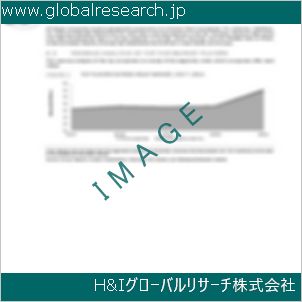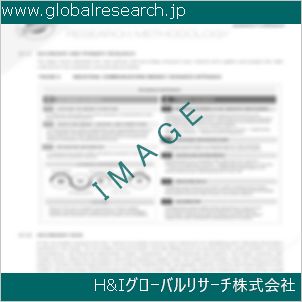Table of Contents
1 Industry Overview of Portlandcement
1.1 Definition and Specifications of Portlandcement
1.1.1 Definition of Portlandcement
1.1.2 Specifications of Portlandcement
1.2 Classification of Portlandcement
1.3 Applications of Portlandcement
1.3.1 Nuclear Application
1.3.2 Non-Nuclear Application
1.4 Industry Chain Structure of Portlandcement
1.5 Industry Overview and Major Regions Status of Portlandcement
1.5.1 Industry Overview of Portlandcement
1.5.2 Global Major Regions Status of Portlandcement
1.6 Industry Policy Analysis of Portlandcement
1.7 Industry News Analysis of Portlandcement
2 Manufacturing Cost Structure Analysis of Portlandcement
2.1 Raw Material Suppliers and Price Analysis of Portlandcement
2.2 Equipment Suppliers and Price Analysis of Portlandcement
2.3 Labor Cost Analysis of Portlandcement
2.4 Other Costs Analysis of Portlandcement
2.5 Manufacturing Cost Structure Analysis of Portlandcement
2.6 Manufacturing Process Analysis of Portlandcement
3 Technical Data and Manufacturing Plants Analysis of Portlandcement
3.1 Capacity and Commercial Production Date of Global Portlandcement Major Manufacturers in 2023
3.2 Manufacturing Plants Distribution of Global Portlandcement Major Manufacturers in 2023
3.3 R&D Status and Technology Source of Global Portlandcement Major Manufacturers in 2023
3.4 Raw Materials Sources Analysis of Global Portlandcement Major Manufacturers in 2023
4 Capacity, Production and Revenue Analysis of Portlandcement by Regions, Types and Manufacturers
4.1 Global Capacity, Production and Revenue of Portlandcement by Regions 2019-2024
4.2 Global and Major Regions Capacity, Production, Revenue and Growth Rate of Portlandcement 2019-2024
4.3 Global Capacity, Production and Revenue of Portlandcement by Types 2019-2024
4.4 Global Capacity, Production and Revenue of Portlandcement by Manufacturers 2019-2024
5 Price, Cost, Gross and Gross Margin Analysis of Portlandcement by Regions, Types and Manufacturers
5.1 Price, Cost, Gross and Gross Margin Analysis of Portlandcement by Regions 2019-2024
5.2 Price, Cost, Gross and Gross Margin Analysis of Portlandcement by Types 2019-2024
5.3 Price, Cost, Gross and Gross Margin Analysis of Portlandcement by Manufacturers 2019-2024
6 Consumption Volume, Consumption Value and Sale Price Analysis of Portlandcement by Regions, Types and Applications
6.1 Global Consumption Volume and Consumption Value of Portlandcement by Regions 2019-2024
6.2 Global and Major Regions Consumption Volume, Consumption Value and Growth Rate of Portlandcement 2019-2024
6.3 Global Consumption Volume and Consumption Value of Portlandcement by Types 2019-2024
6.4 Global Consumption Volume and Consumption Value of Portlandcement by Applications 2019-2024
6.5 Sale Price of Portlandcement by Regions 2019-2024
6.6 Sale Price of Portlandcement by Types 2019-2024
6.7 Sale Price of Portlandcement by Applications 2019-2024
6.8 Market Share Analysis of Portlandcement by Different Sale Price Levels
7 Supply, Import, Export and Consumption Analysis of Portlandcement
7.1 Supply, Consumption and Gap of Portlandcement 2019-2024
7.2 Global Capacity, Production, Price, Cost, Revenue, Supply, Import, Export and Consumption of Portlandcement 2019-2024
7.3 USA Capacity, Production, Price, Cost, Revenue, Supply, Import, Export and Consumption of Portlandcement 2019-2024
7.4 EU Capacity, Production, Price, Cost, Revenue, Supply, Import, Export and Consumption of Portlandcement 2019-2024
7.5 China Capacity, Production, Price, Cost, Revenue, Supply, Import, Export and Consumption of Portlandcement 2019-2024
7.6 Japan Capacity, Production, Price, Cost, Revenue, Supply, Import, Export and Consumption of Portlandcement 2019-2024
8 Major Manufacturers Analysis of Portlandcement
8.1 Manufacturer One
8.1.1 Company Profile
8.1.2 Product Picture and Specifications
8.1.2.1 Type I
8.1.2.2 Type II
8.1.2.3 Type III
8.1.3 Capacity, Production, Price, Cost, Gross and Revenue
8.1.4 Contact Information
8.2 Manufacturer Two
8.2.1 Company Profile
8.2.2 Product Picture and Specifications
8.2.2.1 Type I
8.2.2.2 Type II
8.2.2.3 Type III
8.2.3 Capacity, Production, Price, Cost, Gross and Revenue
8.2.4 Contact Information
8.3 Manufacturer Three
8.3.1 Company Profile
8.3.2 Product Picture and Specifications
8.3.2.1 Type I
8.3.2.2 Type II
8.3.2.3 Type III
8.3.3 Capacity, Production, Price, Cost, Gross and Revenue
8.3.4 Contact Information
8.4 Manufacturer Four
8.4.1 Company Profile
8.4.2 Product Picture and Specifications
8.4.2.1 Type I
8.4.2.2 Type II
8.4.2.3 Type III
8.4.3 Capacity, Production, Price, Cost, Gross and Revenue
8.4.4 Contact Information
8.5 Manufacturer Five
8.5.1 Company Profile
8.5.2 Product Picture and Specifications
8.5.2.1 Type I
8.5.2.2 Type II
8.5.2.3 Type III
8.5.3 Capacity, Production, Price, Cost, Gross and Revenue
8.5.4 Contact Information
…
9 Marketing Trader or Distributor Analysis of Portlandcement
9.1 Marketing Channels Status of Portlandcement
9.2 Traders or Distributors with Contact Information of Portlandcement by Regions
9.3 Ex-work Price, Channel Price and End Buyer Price Analysis of Portlandcement
9.4 Regional Import, Export and Trade Analysis of Portlandcement
10 Industry Chain Analysis of Portlandcement
10.1 Upstream Major Raw Materials Suppliers Analysis of Portlandcement
10.1.1 Major Raw Materials Suppliers with Contact Information Analysis of Portlandcement
10.1.2 Major Raw Materials Suppliers with Supply Volume Analysis of Portlandcement by Regions
10.2 Upstream Major Equipment Suppliers Analysis of Portlandcement
10.2.1 Major Equipment Suppliers with Contact Information Analysis of Portlandcement
10.2.2 Major Equipment Suppliers with Product Pictures Analysis of Portlandcement by Regions
10.3 Downstream Major Consumers Analysis of Portlandcement
10.3.1 Major Consumers with Contact Information Analysis of Portlandcement
10.3.2 Major Consumers with Consumption Volume Analysis of Portlandcement by Regions
10.4 Supply Chain Relationship Analysis of Portlandcement
11 Development Trend of Analysis of Portlandcement
11.1 Capacity, Production and Revenue Forecast of Portlandcement by Regions and Types
11.1.1 Global Capacity, Production and Revenue of Portlandcement by Regions 2024-2029
11.1.2 Global and Major Regions Capacity, Production, Revenue and Growth Rate of Portlandcement 2024-2029
11.1.3 Global Capacity, Production and Revenue of Portlandcement by Types 2024-2029
11.2 Consumption Volume and Consumption Value Forecast of Portlandcement by Regions, Types and Applications
11.2.1 Global Consumption Volume and Consumption Value of Portlandcement by Regions 2024-2029
11.2.2 Global and Major Regions Consumption Volume, Consumption Value and Growth Rate of Portlandcement 2024-2029
11.2.3 Global Consumption Volume and Consumption Value of Portlandcement by Types 2024-2029
11.2.4 Global Consumption Volume and Consumption Value of Portlandcement by Applications 2024-2029
11.3 Supply, Import, Export and Consumption Forecast of Portlandcement
11.3.1 Supply, Consumption and Gap of Portlandcement 2024-2029
11.3.2 Global Capacity, Production, Price, Cost, Revenue, Supply, Import, Export and Consumption of Portlandcement 2024-2029
11.3.3 USA Capacity, Production, Price, Cost, Revenue, Supply, Import, Export and Consumption of Portlandcement 2024-2029
11.3.4 EU Capacity, Production, Price, Cost, Revenue, Supply, Import, Export and Consumption of Portlandcement 2024-2029
11.3.5 China Capacity, Production, Price, Cost, Revenue, Supply, Import, Export and Consumption of Portlandcement 2024-2029
11.3.6 Japan Capacity, Production, Price, Cost, Revenue, Supply, Import, Export and Consumption of Portlandcement 2024-2029
12 New Project Investment Feasibility Analysis of Portlandcement
12.1 New Project SWOT Analysis of Portlandcement
12.2 New Project Investment Feasibility Analysis of Portlandcement
13 Conclusion of the Global Portlandcement (CAS 65997-15-1) Industry 2024 Market Research Report
| ※参考情報 ポルトランドセメントは、現代建設において最も広く使用されているセメントの一種であり、その名は1873年にジョセフ・アスプディンがイギリスのポルトランド島にある石灰岩に似た色合いのコンクリートを作ったことに由来しています。ポルトランドセメントは、主に石灰石と粘土を焼成し、粉砕することで製造されます。これは、強度と耐久性に優れた材料であり、建設業界で非常に重要な役割を果たしています。 ポルトランドセメントの特徴には、その化学的組成や物理的特性が含まれます。このセメントは、主にカルシウムシリケート(C3S、C2S)、カルシウムアルミネート(C3A)、そしてカルシウムフェライト(C4AF)という成分から構成されています。これらの成分は、セメントが水と反応する際に強固な結合を形成し、その結果としてコンクリートが硬化し強度を増すことになります。ポルトランドセメントは水和反応を経て強度を発揮する性質があり、これにより高い圧縮強度を持つコンクリートを作り出すことが可能です。 ポルトランドセメントの種類は、用途や製造過程に応じて異なります。一般的なポルトランドセメントには、普通ポルトランドセメント(OPC)があり、このタイプは多くの建設プロジェクトで使用されます。その他にも、耐硫酸性ポルトランドセメント、高炉スラグポルトランドセメント、さらには微粉末セメントなど、多様な種類があります。耐硫酸性ポルトランドセメントは、土壌や地下水中に含まれる硫酸に対する耐久性が求められる環境で用いられます。高炉スラグポルトランドセメントは、製鋼所から出るスラグを利用しており、環境負荷の低減に寄与しています。 これらのセメントの用途は幅広く、建築物の基礎、橋梁、ダム、道路、工場、住宅など、あらゆるインフラの構築に使用されます。ポルトランドセメントは、コンクリートにおける基本的な成分であり、コンクリートそのものの強度と耐久性を決定づけるのです。また、モルタルやブロック製造など、他の建設資材においても重要な役割を果たしています。 ポルトランドセメントは、技術の進歩によってより効率的な製造方法が開発されており、環境への配慮もされるようになっています。たとえば、二酸化炭素の排出削減を目指すため、高炉スラグやフライアッシュなど再利用可能な副産物を混ぜ込むことにより、製造過程の環境負荷を軽減することができます。また、これによって長期的なコンクリートの性能が改善されることもあります。 近年では、建設工程における持続可能性の観点から、ポルトランドセメントを使用しない代替材料が検討されています。しかし、ポルトランドセメントは、現在の技術では未だにコンクリートの性能を担保するために不可欠な素材とされています。そのため、持続可能な開発の視点から、ポルトランドセメントの使用およびその生産における効率向上、廃棄物の再利用等が重要されます。 最先端の技術では、セメント工業におけるAIやIoT(モノのインターネット)を活用し、製造プロセスの最適化が進められています。これにより、品質管理がより精密になり、原材料の利用効率が向上することが期待されています。さらに、セメントの水和反応に関する研究も進んでおり、より高強度なセメントの開発が進められています。 また、ポルトランドセメントが持つ特性の一つに、耐火性があります。特に建物の防火設計において、ポルトランドセメントは重要な材料として使用されます。火災による建物の崩壊を防ぐための耐火構造として、その特性を活かした設計が行われています。 ポルトランドセメントは、私たちの生活を支える非常に重要な材料であり、建設分野における基盤を提供します。その強度、耐久性、コストパフォーマンスの良さから、今後も建設業界において不可欠な存在であり続けるでしょう。持続可能な社会の実現に向けた技術革新や環境への配慮を反映しつつ、ポルトランドセメントは発展を続けると考えられます。 |
❖ 免責事項 ❖
http://www.globalresearch.jp/disclaimer












